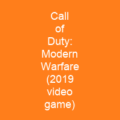Understanding Hezbollah’s Military Might
Hezbollah, a Lebanese Shia Islamist political party and militant group, has built an impressive military wing that rivals the Lebanese Army. With around 100,000 trained fighters, financed by Iran and trained by its Islamic Revolutionary Guard Corps (IRGC), Hezbollah stands as one of the most formidable non-state actors in the world.Hezbollah’s Arsenal: A Mix of Modern and Traditional
Hezbollah’s arsenal is a mix of modern and traditional weaponry. They possess limited numbers of anti-aircraft and anti-ship missiles, thousands of anti-tank missiles, and a large number of rockets and light infantry units. The group has built an extensive network of weapons caches, tunnels, and bunkers in southern Lebanon, providing them with strategic depth against potential adversaries.
Strategic Depth and Tactical Proficiency
Their tactical strengths include cover and concealment, direct fire, and preparation of fighting positions. However, Hezbollah’s weaknesses lie in maneuver warfare, small arms marksmanship, and air defenses. Despite these limitations, the group has demonstrated strategic depth by building military infrastructure within densely populated areas, making it challenging for Israel to target their forces effectively.
Hezbollah’s Evolution: From Guerrilla to Hybrid Actor
Since its founding in 1982 as a response to Israeli occupation, Hezbollah has evolved from a guerrilla organization into a hybrid actor with conventional capabilities. The group’s military deployment to Syria since 2012 has further enhanced their combat experience and tactical proficiency. In the Syrian conflict, Hezbollah fought alongside Russian forces, engaging in offensive and counter-insurgency operations.
Training and Recruitment: A Rigorous Process
Hezbollah runs its own training camps, with Iran’s IRGC playing an integral role in advanced training. The group has traveled to Iran for more advanced training and operates a network of introductory training camps. Training includes long marches, reconnaissance, observation, and navigation skills, with fighters specializing in fields like explosives or anti-tank missiles.
Hezbollah’s Role in Syria: A Test of Conventional Warfare
In the Syrian conflict, Hezbollah has deployed up to 4,000 fighters, conducting offensive and counter-insurgency operations. Their experience in conventional warfare has made them a better fighting force, but this has also diverted resources away from Israel and reduced their standing among Lebanese Sunnis.
Hezbollah’s Intelligence Apparatus: A Key Asset
The group maintains a capable intelligence apparatus responsible for intelligence, counter-intelligence, and internal supervision. Hezbollah’s intelligence organization was formed in the 1980s and has penetrated various groups, including Salafist and Islamist groups. Since 2000, they have focused on acquiring a database of Israeli infrastructure to target with rocket artillery.
Hezbollah’s Media Presence: A Tool for Propaganda
Hezbollah takes media seriously, using its newspapers, al-Manar television station, and Radio Nour to bring news of their fighting activities to constituents and the world. This media presence helps maintain public support and reinforces their narrative.
Conclusion
In conclusion, Hezbollah’s military strength is a complex mix of traditional guerrilla tactics and modern conventional warfare capabilities. Their extensive training camps, advanced weaponry, and strategic depth make them a formidable force in the region. As they continue to evolve, Hezbollah remains a significant player in both Lebanon and Syria, shaping the political landscape through their military prowess.
You want to know more about Hezbollah armed strength?
This page is based on the article Hezbollah armed strength published in Wikipedia (retrieved on November 24, 2024) and was automatically summarized using artificial intelligence.






